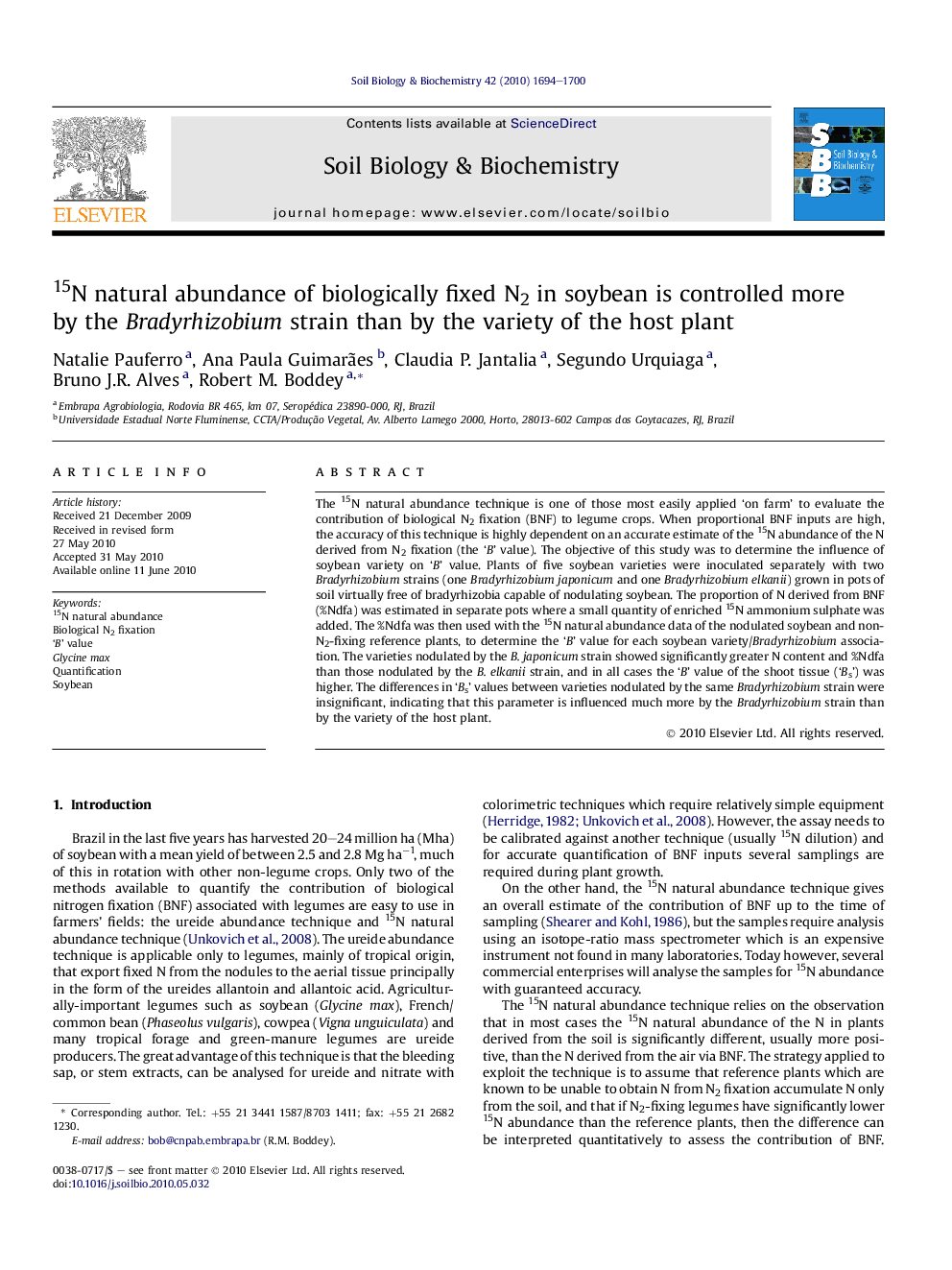| Article ID | Journal | Published Year | Pages | File Type |
|---|---|---|---|---|
| 2025403 | Soil Biology and Biochemistry | 2010 | 7 Pages |
The 15N natural abundance technique is one of those most easily applied ‘on farm’ to evaluate the contribution of biological N2 fixation (BNF) to legume crops. When proportional BNF inputs are high, the accuracy of this technique is highly dependent on an accurate estimate of the 15N abundance of the N derived from N2 fixation (the ‘B’ value). The objective of this study was to determine the influence of soybean variety on ‘B’ value. Plants of five soybean varieties were inoculated separately with two Bradyrhizobium strains (one Bradyrhizobium japonicum and one Bradyrhizobium elkanii) grown in pots of soil virtually free of bradyrhizobia capable of nodulating soybean. The proportion of N derived from BNF (%Ndfa) was estimated in separate pots where a small quantity of enriched 15N ammonium sulphate was added. The %Ndfa was then used with the 15N natural abundance data of the nodulated soybean and non-N2-fixing reference plants, to determine the ‘B’ value for each soybean variety/Bradyrhizobium association. The varieties nodulated by the B. japonicum strain showed significantly greater N content and %Ndfa than those nodulated by the B. elkanii strain, and in all cases the ‘B’ value of the shoot tissue (‘Bs’) was higher. The differences in ‘Bs’ values between varieties nodulated by the same Bradyrhizobium strain were insignificant, indicating that this parameter is influenced much more by the Bradyrhizobium strain than by the variety of the host plant.
